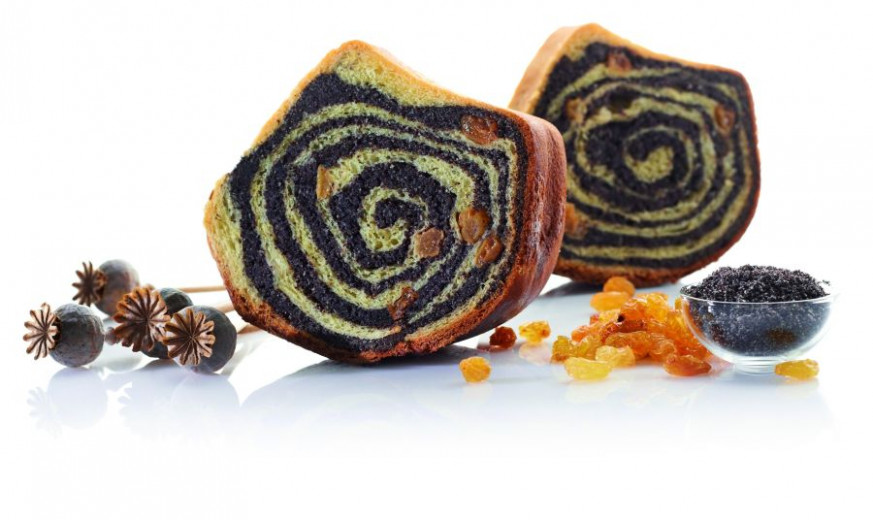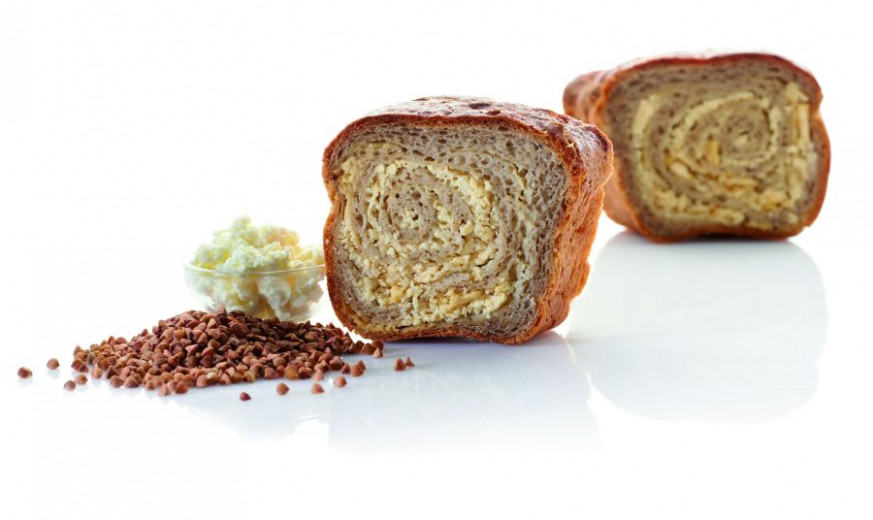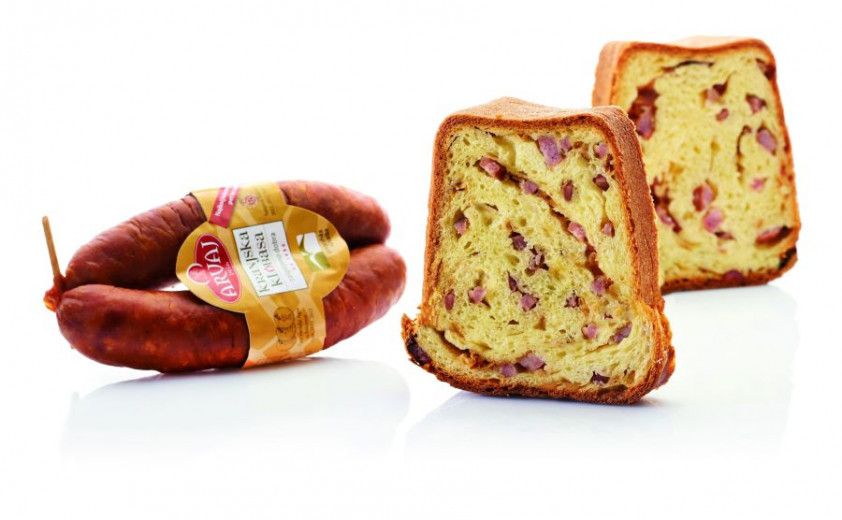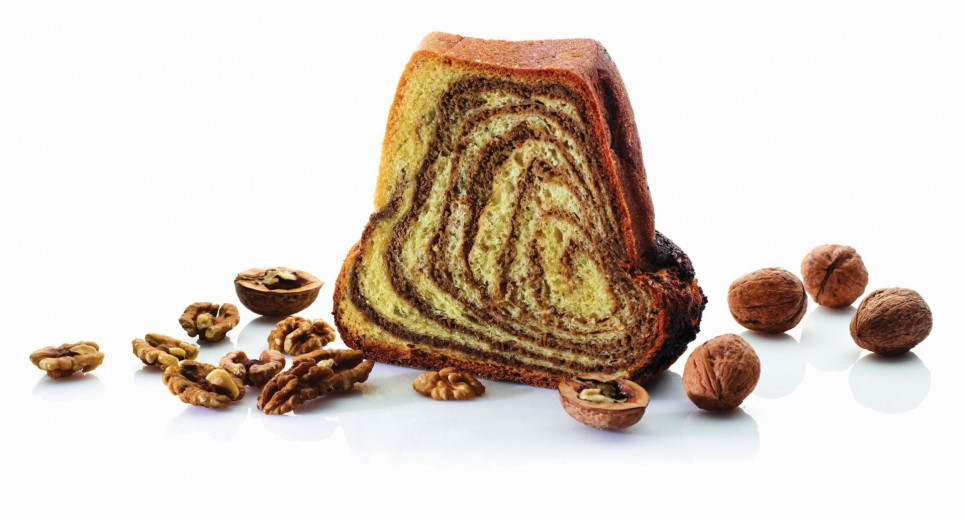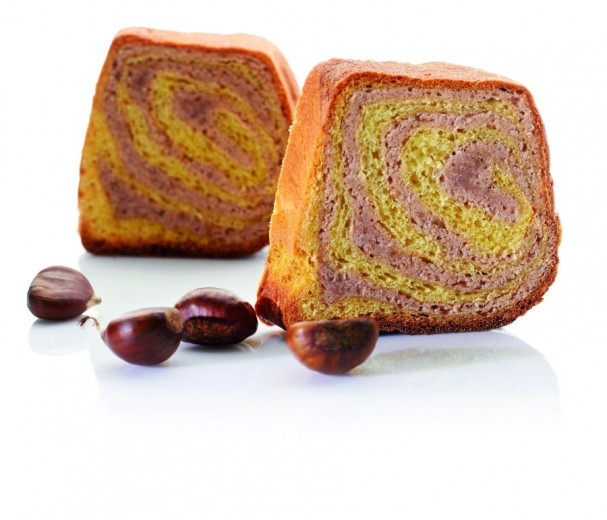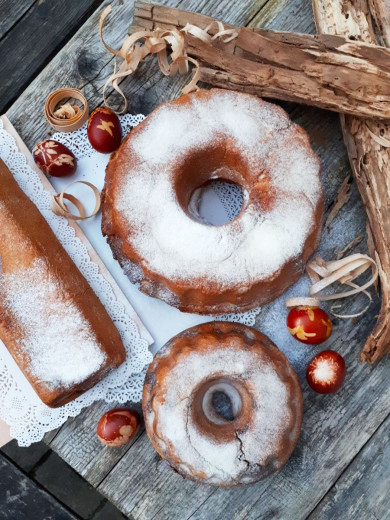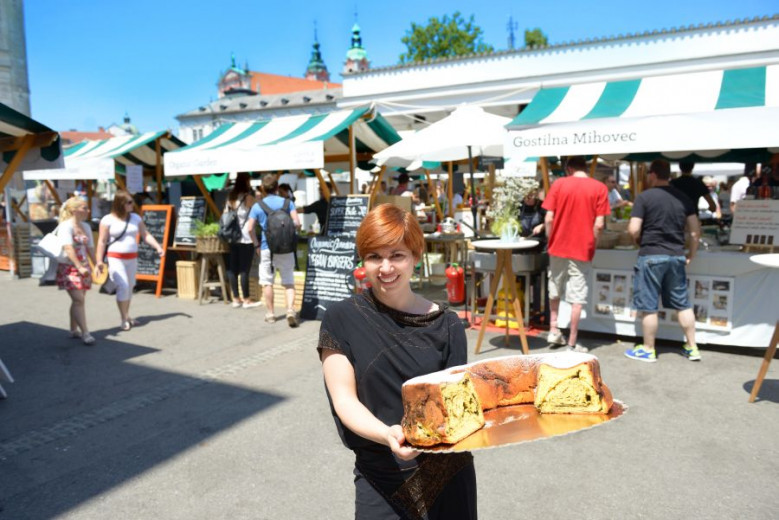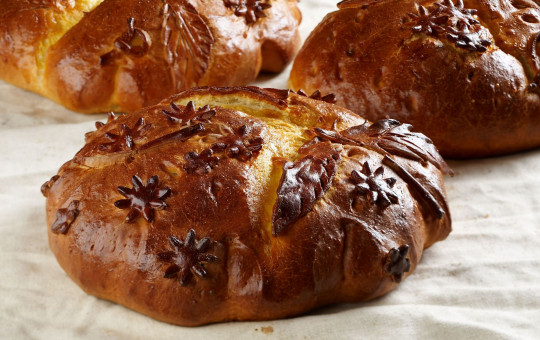No Christmas or Easter holiday in Slovenia is complete without a walnut potica cake. Equally, potica is common at weddings and funerals, and at all major family and national holidays.
Potica is home, homeland, family happiness, it is the memory of childhood. It is also becoming an increasingly important part of Slovenia’s tourist attractions, and part of State protocol. It can appear in various interpretations: different ingredients (hazelnuts, chocolate, poppy seeds, pork crackling and so forth) and different sizes (mini or full-sized).
The most common ingredient for all of these is leavened dough made of white or buckwheat flour.
Slovenia lies at the meeting point of the Alps, Mediterranean and eastern Pannonian Plain, hence the differing views on how the forerunner of potica was named and prepared. We can find "gubana" (a holiday cake of Friuli), "putizza"(a Trieste dessert), "pohača" and "šartal" (in Austrian Carinthia) and so on. Among the earliest recorded mentions of the word potica is a reference by Primož Trubar (1508-1586) in the book Catechism from 1575, which uses the form "povitica". It was then described in more detail by Janez Vajkard Valvasor (1641-1693) in his work The Glory of the Duchy of Carniola, which mentions it in a description of Christmas pastries. The early sources also indicate that on holidays this cake was baked by both the nobility and peasants, who all also blessed it. This shows that since the earliest times it was a special holiday food.
First cookbooks
In the first Slovenian cookbook, published in Slovenian in 1799 by Valentin Vodnik (1758-1819), there is no recipe given for potica in its forms of kolač, pogača, gubana or presnec, and potica appears later as a generic cake in some German-language sources. The first edition of the famous cookbook "Die Süddeutsche Küche für Anfängerinnen und praktische Köchinnen", written by Katharina Prato (1818-1897), a Slovenian woman, was published in 1858. This book recorded recipes for dishes made of leavened dough: špehovka, ocvirkovka and cakes with various fillings (fresh fruit, raisins and almonds, honey biscuits, marmalade and so forth). It also featured poppy seeds and walnut potica. For the latter there is even an illustration showing that this was indeed potica or povitica, a rolled-up cake without the central hole (otherwise typical of potica).
The most successful cookbook of the time was written in 1865 by Magdalena Knafelj Pleiweis (1815-1890), who devoted an entire chapter to "good bread and potica".
The book also distinguished between potica and the dumpling-like "štruklji", with the predominant method involving baking the cake in a mould with a cone in the middle. She set the ball rolling for numerous other writers to develop the recipe, a process that continues to the present day.
It is also interesting to note that despite the classic recipe there are potica variants for individual regions.v
Around the world
Much credit for spreading the popularity of potica around the world goes to generations of Slovenian expatriates, especially in the USA.
Alongside Kranjska klobasa sausage, carnations and folk pop music, walnut potica is an important part of the ethnic identity.
One of the best-known expatriate cookbooks, entitled "Slovene-American Cookbook", was written by Ivanka Zakrajšek and published in 1945, and mention should also be made of "Woman's Glory – The Kitchen", edited by Albina Novak and issued in 1953 by Slovenian Women's Union of America on its Silver Anniversary. In America, potica is even made by some U.S. companies.
Dessert pastries similar to potica also exist in the cuisines of Austria, Italy, Hungary and all the way through Turkey to Russia. A sweet pastry similar to potica (especially the poppy seed version) is made in Hungary, where it is called "beigli". A close relative of Slovenian walnut potica in Croatia is "orehnjača", in Romania it is "cozonac", in Turkey "nokul" and so on. However, the similarities here are mainly visual, as the fillings vary and preparation methods differ.
Gastronomic strategy
Slovenia established a Gastronomic Strategy in 2006, the cornerstone of which is a culinary pyramid. In this way Slovenia is presented as a place of distinct culinary diversity, with tarragon potica among these dishes at the top of the pyramid. The other most typical versions are walnut, crackling, bacon, and carob, now followed by a growing number of variations.
Date: 5. December 2024
Time to read: 4 min

